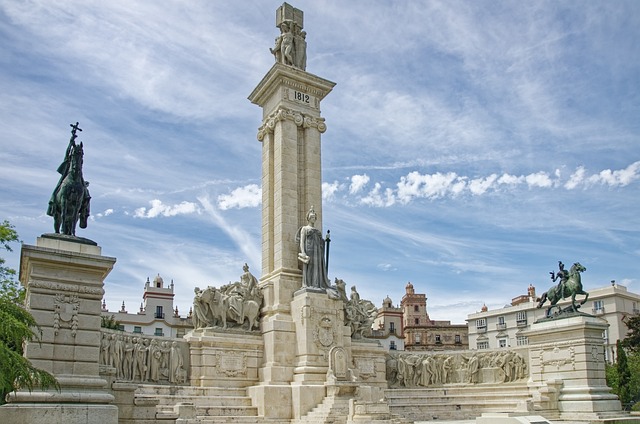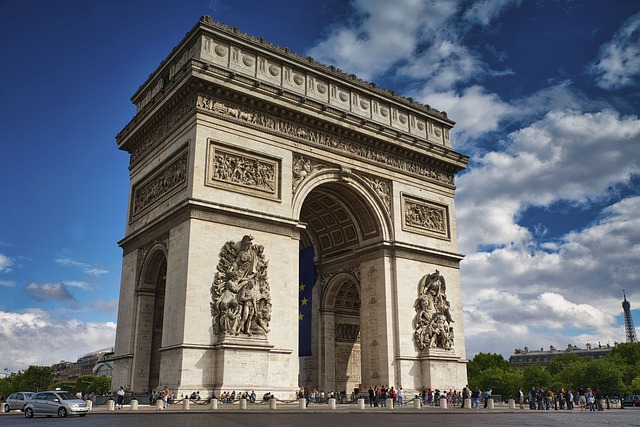Free Landmark Research Template
Landmark Research
By: [Your Name]
I. Introduction
Historical and man-made landmarks serve as tangible representations of human ingenuity, cultural heritage, and historical significance. These landmarks, ranging from ancient structures to modern architectural marvels, hold immense value not only for the communities they reside in but also for global appreciation and understanding of human achievements throughout history.
This research paper aims to delve into the significance of historical and man-made landmarks, exploring their cultural, social, economic, and environmental impacts.
II. Importance of Historical and Man-Made Landmarks

Historical and man-made landmarks play multifaceted roles in society, contributing to various aspects of human life and heritage preservation.
-
Cultural Heritage Preservation: Landmarks serve as tangible links to the past, preserving cultural heritage and traditions for future generations. They encapsulate the history, artistry, and craftsmanship of bygone eras, allowing people to connect with their roots and identity.
-
Tourism and Economic Development: Landmarks attract tourists from around the world, driving economic growth through tourism-related activities such as accommodations, dining, and souvenir sales. They serve as focal points for local economies, creating jobs and generating revenue for communities.
-
Architectural and Engineering Excellence: Many landmarks showcase remarkable architectural and engineering feats, pushing the boundaries of human creativity and innovation. They inspire awe and admiration, serving as testaments to human capability and imagination.
-
Symbolism and Identity: Landmarks often hold symbolic significance, representing ideals, beliefs, and collective identities of societies. They serve as iconic symbols of cities, nations, or cultural movements, fostering a sense of pride and unity among residents.
-
Educational and Research Value: Landmarks provide educational opportunities for learning about history, architecture, and cultural diversity. They serve as outdoor classrooms for students and researchers, offering insights into past civilizations, technological advancements, and societal norms.
III. Case Studies: Analyzing Landmark Significance
This section presents case studies of prominent historical and man-made landmarks, highlighting their significance and impact:
|
Landmark |
Location |
Significance |
Impact |
|---|---|---|---|
|
The Great Wall of China |
China |
Symbol of ancient defense and unity; UNESCO World Heritage Site |
Tourism revenue, cultural symbol, historical significance |
|
The Eiffel Tower |
France |
Iconic Parisian landmark; feat of iron architecture |
Tourism, economic revenue, cultural symbol |
|
The Statue of Liberty |
United States |
Symbol of freedom and democracy; gift from France |
Tourism, cultural symbol, historical significance |
|
Machu Picchu |
Peru |
Inca citadel; archaeological wonder in the Andes |
Tourism, cultural heritage, archaeological significance |
|
Sydney Opera House |
Australia |
Architectural masterpiece; UNESCO World Heritage Site |
Tourism, cultural icon, architectural significance |
IV. Challenges and Conservation Efforts

While historical and man-made landmarks hold immense value, they also face challenges such as deterioration, natural disasters, urbanization, and inadequate preservation efforts. Conservation initiatives are crucial for safeguarding these landmarks for future generations.
Deterioration
Aging infrastructure and environmental factors contribute to the deterioration of landmarks over time. Preservation efforts involve regular maintenance, restoration, and conservation measures to prevent further decay.
Urbanization
Rapid urbanization can threaten the integrity of landmarks through encroachment, pollution, and development pressures. Urban planning strategies and zoning regulations are essential for preserving the surrounding environments of landmarks.
Natural Disasters
Landmarks are vulnerable to natural disasters such as earthquakes, floods, and hurricanes. Disaster preparedness plans, structural reinforcements, and risk mitigation strategies are essential for minimizing damage and ensuring resilience.
Funding and Resources
Adequate funding and resources are critical for conservation efforts, including maintenance, restoration projects, and staff training. Public-private partnerships, government grants, and philanthropic donations play a crucial role in supporting conservation initiatives.
V. Conclusion
Historical and man-made landmarks are invaluable assets that enrich our lives, inspire creativity, and connect us to our collective heritage. Understanding their significance and implementing effective conservation strategies are essential for preserving these treasures for future generations to cherish and appreciate.
VI. References
-
UNESCO World Heritage Centre. (n.d.). World Heritage List. https://whc.unesco.org/en/list/
-
National Park Service. (n.d.). Historic Preservation. https://www.nps.gov/subjects/historicpreservation/index.htm
-
The Getty Conservation Institute. (n.d.). Conservation. https://www.getty.edu/conservation/
-
United Nations Sustainable Development Goals. (n.d.). Goal 11: Sustainable Cities and Communities. https://sdgs.un.org/goals/goal11
-
International Council on Monuments and Sites (ICOMOS). (n.d.). https://www.icomos.org/en/